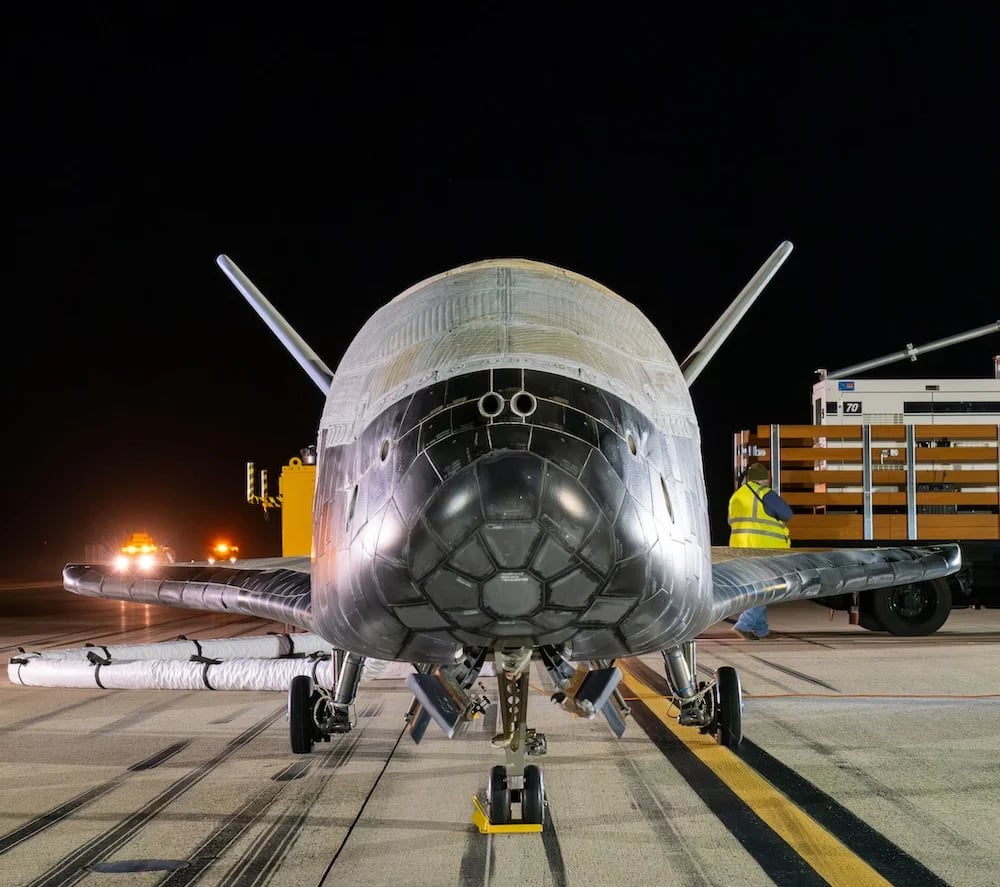[/caption]
It's cute. It's little. It's also top secret. The X-37B orbital test vehicle is at Cape Canaveral in Florida, and the word is that it will be launched on board an Atlas V rocket on Monday April 19, 2010 at around 10 pm EDT. Other than that, the Air Force isn't saying much about this mini-space shuttle look-alike. The reusable unmanned vehicle is capable of staying in orbit for 270 days, but the mission duration hasn't been announced. Additionally, the ship has a payload bay for experiments and deployable satellites, but no word if any payloads will be included on the inaugural flight of this mini space plane.
[caption id="attachment_60055" align="aligncenter" width="398" caption="X-37B. Credit: US Air Force"]
[/caption]
The X-37B is 9 meters long and 4.5 meter wide (29 X 15 ft) and its payload bay is 2.1 by 1.2 meters (7 by 4 feet). The vehicle was built at Boeing Phantom Works, based on an orbital and re-entry demonstrator design initially developed by NASA, then handed over to the Pentagon.
Rumors of an X-37B launch have been circulating since 2008.
Originally the vehicle was scheduled for launch in from the payload bay of the Space Shuttle, but that plan was axed following the Columbia accident. [caption id="attachment_60056" align="aligncenter" width="250" caption="The X-37A carried by WhiteKnightOne in 2005 (Alan Radecki)"]
[/caption] DARPA, the Defense Advanced Research Projects Agency completed a series of approach and landing drop tests in 2007 of an experimental X-37B vehicle using the White Knight airplane from Scaled Composites as a mothership.
It will land like the space shuttle, with the primary landing site at Vandenberg Air Force Base in California. Edwards Air Force Base is the backup landing site.
The project is managed by the Air Force Rapid Capabilities Office.
The X-37B's mission is to "demonstrate a reliable, reusable, unmanned space test platform for the United States Air Force," according to a fact sheet put out by the military. "Objectives of the OTV program include space experimentation, risk reduction and concept of operations development for reusable space vehicle technologies."
It will be interesting to ascertain the capabilities and uses for this vehicle.
Sources:
Spaceflightnow
,
Wiki
,
 Universe Today
Universe Today
